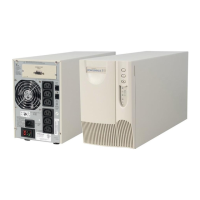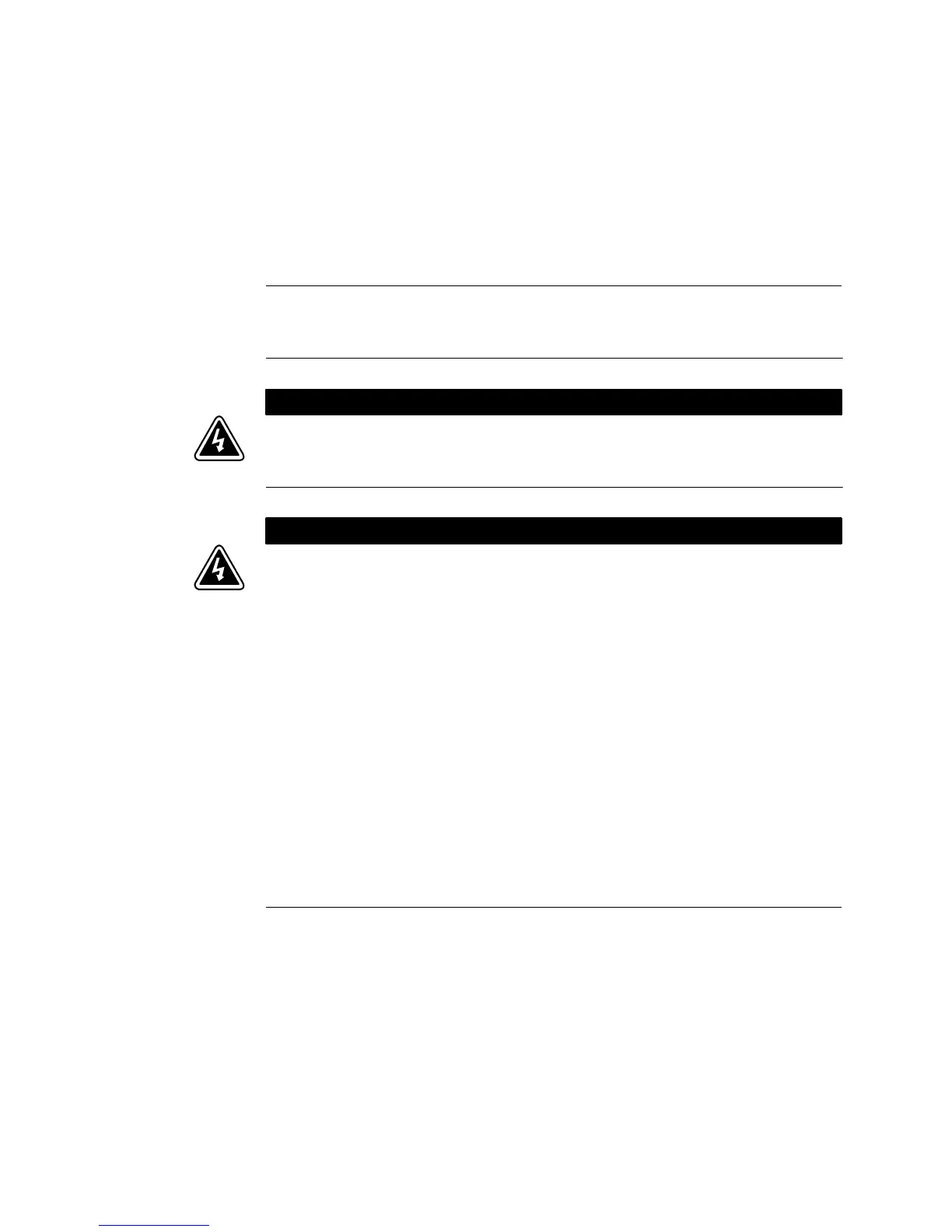
 Loading...
Loading...
Do you have a question about the Eaton 5125 and is the answer not in the manual?
Lists harmonized standards and EU directives for CE mark compliance.
Provides contact details for obtaining the EC Declaration of Conformity.
Summarizes compliance statements for FCC, ICES-003, EN 50091-2, and VCCI.
Explains important symbols like Electric Shock, Manual Reference, RJ-45, and Battery.
General introduction to the UPS and its purpose in protecting sensitive electronic equipment.
Lists the key features and benefits of the Eaton 5125 UPS.
Covers important safety instructions, lethal voltages, and authorized personnel requirements.
Warnings related to UPS power, output receptacles, and installation environment.
Cautions regarding battery risks like shock, burns, and proper disposal.
Instructions for inspecting equipment for shipping damage and filing claims.
Steps for connecting the internal UPS battery and general installation procedures.
Description of the rear panel layouts for different UPS models.
Step-by-step guide to connect the internal UPS battery.
Connecting the internal battery connectors as shown in the diagram.
Instructions for installing the UPS and optional Extended Battery Modules (EBMs).
Connecting the computer to the UPS communication port for software control.
Connecting protected equipment to UPS outlets and the UPS to power.
Details UPS startup sequence, indicators, and turning the UPS on.
Diagrams illustrating the rear panel configurations of different UPS models.
Covers turning the UPS on/off, starting on battery, and self-testing.
Explanation of the different operating modes of the UPS.
Steps to turn on the UPS and start it using battery power.
Describes UPS status indication via front panel indicators and controls.
Explains Normal mode and Buck/Double Boost modes for voltage regulation.
Describes UPS operation during power outages and in standby mode.
Overview of optional communication cards for UPS networking and management.
Feature for protecting network connections from electrical surges.
Control of receptacle groups for orderly shutdown and startup of equipment.
Details various X-Slot cards and the Single-Port Card's function.
Details the pin assignments for the UPS communication port and their functions.
Explanation of the network transient protector's role in surge protection.
Diagrams showing load segment layouts for different UPS models.
Guidelines for UPS/battery care, safe transport, and proper storage.
Steps for replacing batteries and testing new ones.
Guidance on proper disposal and recycling of used batteries and UPS units.
Proper care and cleaning of the UPS and its battery environment.
Critical step to disconnect internal UPS batteries before transport.
Step-by-step instructions for replacing internal UPS batteries.
Specific steps for removing the battery in 1000 VA models.
Steps for removing and installing batteries in 1500/2200 VA models.
Instructions for replacing EBMs and testing new batteries.
Warnings and cautions for battery and UPS disposal and recycling.
Lists UPS models, their dimensions, and weights.
Details electrical input/output, environmental conditions, and safety compliance.
Specifications related to the UPS batteries, including type and charging.
Details power connections and key technical specifications like frequency and regulation.
Covers environmental conditions, safety compliance, and battery details.
Table showing battery runtime in minutes for different load conditions and EBM configurations.
Explains UPS alarms, conditions, and procedures for silencing them.
Information on obtaining technical support and service for the UPS.
Guide to diagnose and resolve common UPS issues like startup, output, and connection problems.
Continues troubleshooting for battery-related alarms and input voltage issues.
Addresses troubleshooting for UPS overload, internal faults, and wiring issues.
Contact information and procedures for obtaining UPS service and technical support.
Details the limited warranty terms and extension for US and Canada.
Outlines what the warranty covers, its duration, and what is excluded.
Explains the process for warranty claims and item repair or replacement.
Lists warranty exclusions and details limitations on the company's liability.
Outlines end-user obligations and other limitations on warranty.
Specifies costs not covered by the warranty and how to obtain service.
Details the load protection guarantee and its required conditions.
Lists exclusions from the guarantee and instructions for making a claim.